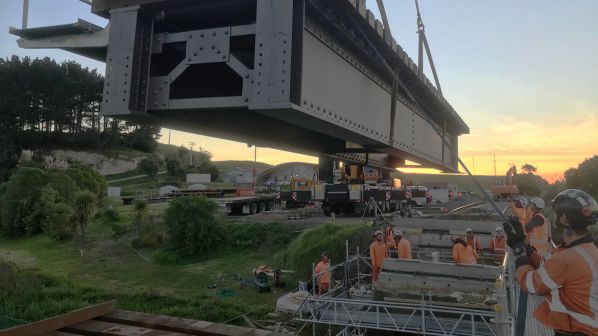NEW Zealand transport minister, Mr Michael Wood, has released the first Rail Network Investment Programme (RNIP), which details a $NZ 1.3bn ($US 908.3m) plan for maintenance, management, renewal and improvement work on the national rail network between 2021 and 2024.
The programme marks a strategic change for planning and funding in New Zealand. Rail network infrastructure funding now provided on a long-term basis through the National Land Transport Fund (NLTF) from July 1 2021 instead of through an annual appropriation.
National railway KiwiRail says delivering the government’s goals for rail requires that tracks, bridges and other rail infrastructure across the country is up to standard. The first RNIP is aimed at addressing historic underinvestment and improving the condition of the network to a “resilient and reliable” level and is in line with the priorities set out in the NZ Rail Plan, to:
- invest in the national rail network to restore rail freight and provide a platform for future investments for growth, including a primary focus (and majority of funding) on the continuous programmes of maintenance, management and renewal; and a modest allowance for improvement projects to support resilience and reliability, and
- invest in metropolitan rail to support productivity and growth in New Zealand’s largest cities, including a focus on completing the programmes which align with Auckland Transport Alignment Project (ATAP) and the Regional Land Transport Plans (RTLP); and enhanced regional services (embedding the Hamilton - Auckland and Palmerston North - Wellington services).
KiwiRail says each RNIP will create a three-year pipeline of work as part of a 10-year forecast, which enables more effective investment decision making, supports and creates new jobs, and provides certainty. The railway says this will enable it to offer better and more reliable services to customers, ultimately resulting in greater volumes on rail.
“Instead of having to go to the government every 12 months for funding to maintain the network without knowing if we will get more money the next year, we now have certainty of funding and a three-year plan,” says KiwiRail chief executive, Mr Greg Miller. “That’s essential for any infrastructure business and it means we can confidently take on the staff we need, knowing there is a pipeline of work ahead of us. KiwiRail is among New Zealand’s largest infrastructure construction companies, with about 1200 track staff already, working 24-7 across the country. We need to increase our staff by 15% to carry out this work, with a commitment taking on more trainees. In addition, this investment will support numerous civil contractors and material supply businesses.”
The NZ Rail Plan and RNIP were developed from the government’s ongoing Future of Rail Review. The new planning and funding model is intended to create greater certainty around the investment programme for the national rail network and support long term sustainable funding.
The government has contributed $NZ 834.4m to the NLTF through the 2020 and 2021 budgets. The government will also implement track access charges later this year to ensure rail users contribute to the NLTF.
“This plan has major benefits for KiwiRail, will create and sustain jobs, and will help ensure New Zealand’s exports and domestic freight get where they need to go,” Miller says. “It covers the important work of replacing aging bridges, worn-out tracks and the civil works necessary to ensure that our national rail network is up to standard so that the thousands of train services we run are reliable.”

